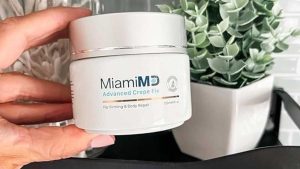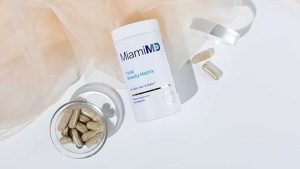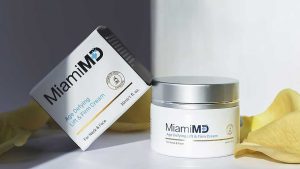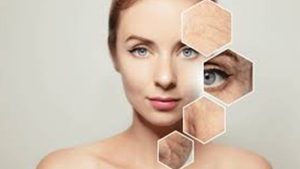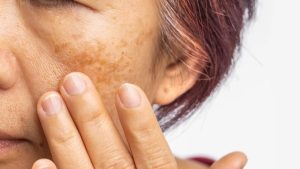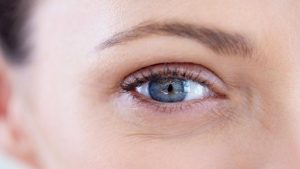How To Get Rid of Forehead Wrinkles
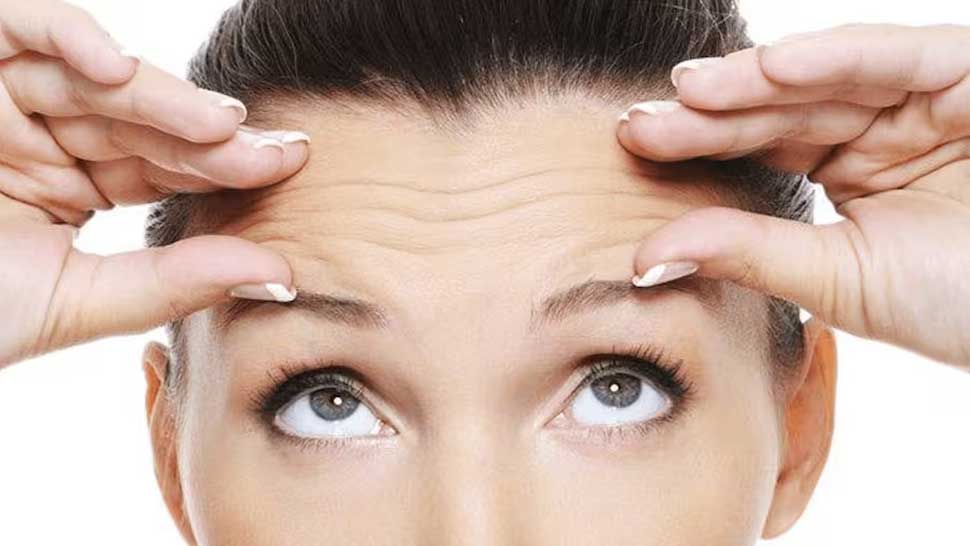
Forehead wrinkles are lines that can appear on your forehead over time. These wrinkles are often caused by facial expressions, the aging process, and sun exposure. While they are a natural part of life, there are ways to reduce their appearance.
Today, we’ll talk about what causes forehead lines and how you can minimize them.
Is It Possible To Permanently Remove Forehead Wrinkles?
Completely removing forehead wrinkles forever is hard. While there are treatments that can smooth them out, wrinkles can come back, especially if the things that caused them are still around. However, there are many ways to make them look less noticeable.
What Causes Forehead Wrinkles?
” Forehead wrinkles are primarily caused by a combination of intrinsic and extrinsic factors,” says dermatologist Shereene Idris (1). Understanding these can help you take action to reduce them.
Facial Expressions
Every time you frown, smile, or raise your eyebrows, your forehead muscles contract, causing the skin to crease. “ Wrinkles are dynamic, so the more expressive we are, the more lines we’re likely to have,” says Elizabeth K. Hale, MD (2). When you’re younger, these creases disappear once your face relaxes. But over time, the skin becomes less elastic, and these lines become more permanent.
Tip: Try to be mindful of repetitive facial expressions. While you can’t (and shouldn’t) stop expressing yourself, relaxation exercises can help minimize unnecessary muscle tension that leads to the appearance of fine lines.
Aging
As we age, our skin naturally produces less collagen and elastin, two key proteins responsible for keeping skin firm and bouncy, referred to as skin elasticity.
The result? Thinner, less resilient skin that’s more prone to wrinkles. “ As we age, we see a decrease in the building blocks of the skin, such as collagen, elastin, and hyaluronic acid. This makes the skin thinner, drier, and less elastic over time, leading to the appearance of wrinkles, lines, and creases,” says dermatologist Dr. Hoss (3).
Additionally, other age-related changes, like slower cell turnover and reduced moisture levels, impact skin health and contribute to the formation of lines and wrinkles.
Sun Damage
The sun’s rays can damage your skin, breaking down collagen and making wrinkles form faster. One older study found that exposure to the sun was responsible for 80% of visible skin aging in 298 women with lighter skin (4).
“Some of the different signs and symptoms of sun damage are age spots, uneven pigmentation, melasma [brown or grey patches of skin], freckles, moles, wrinkles, fine lines, skin laxity, spider veins, and tanning,” says consultant dermatologist Dr. Borysiewicz (5). This is why protecting your skin from the sun is so important.
How To Reduce the Look of Forehead Wrinkles
There are several ways to reduce the appearance of forehead wrinkles and keep your skin looking smooth.
Add Exfoliation to Your Routine
Exfoliating your skin removes dead skin cells, making your skin look fresher, smoother, and more radiant.
Regular exfoliation not only helps improve skin texture but also allows other skin care products, like serums and moisturizers, to penetrate deeper and work more effectively. This step is especially important for targeting fine lines and wrinkles, as it encourages cell turnover and supports proper collagen production, helping to plump and firm the look of your skin over time.
When adding exfoliation to your routine, it’s important to choose the right type of exfoliant for your skin type. A gentle scrub with fine particles is great for those with resilient skin. A chemical exfoliant, such as glycolic acid or lactic acid, is ideal for those with sensitive or aging skin as it’s less abrasive. Chemical exfoliants can also target deeper layers of the skin, making them a powerful tool for improving the look of fine lines.
To avoid irritation, start exfoliating once or twice a week and gradually increase the frequency if your skin tolerates it well. Pair your exfoliation routine with a soothing moisturizer to replenish hydration and maintain a healthy skin barrier.
Over time, consistent exfoliation can help create a smoother, more youthful-looking complexion, making it an essential step in your anti-aging skincare routine.
Incorporate Argireline
Argireline is a powerful peptide often referred to as “Botox in a bottle” because of its ability to mimic some of the effects of in-office Botox injections without the need for needles. This ingredient works by relaxing facial muscles, which helps reduce the appearance of dynamic wrinkles — those caused by repetitive muscle movements, such as frowning or raising your eyebrows.
Argireline works by interfering with the signals that cause muscles to contract. This can temporarily soften the look of forehead wrinkles and prevent them from becoming deeper over time. Unlike Botox, which is injected into the muscle, Argireline is applied topically, typically as part of a serum or cream.
It helps relax the muscles in your forehead, which can make your wrinkles look less noticeable. “Argireline — which is written in ingredients lists as acetyl hexapeptide-3 or acetyl hexapeptide-8 — is a peptide that works by hindering the release of neurotransmitters to activate muscle movements, producing a Botox-like effect,” says cosmetic nurse practitioner Jodi LoGerfo (6).
If you’re looking for a gentle, affordable, and convenient way to tackle forehead wrinkles, Argireline could be a game-changer in your skincare routine. You can find this ingredient in Miami MD’s best-selling topical Age-Defying Lift & Firm Cream.
Chemical Peels
A chemical peel can help remove the top layer of your skin, making it look smoother and more radiant. This treatment works by applying a chemical solution to the skin, which exfoliates the surface and stimulates cell turnover. As the old skin peels away, fresh, new skin is revealed, which can help reduce the appearance of wrinkles and improve overall texture.
Chemical peels come in varying strengths- light, medium, and deep — depending on your skincare needs. Light peels, often made with alpha hydroxy acids (AHAs) like glycolic or lactic acid, are great for mild wrinkles and can be done regularly. Medium and deep peels, which use stronger acids, can address more pronounced wrinkles but require longer recovery times.
In addition to reducing wrinkles, chemical peels can also minimize the appearance of age spots, sun damage, and uneven skin tone, making them a versatile option for skin rejuvenation. For the best results and safety, it’s essential to consult a professional to determine the right type of peel for your skin type and concerns.
Dermal Fillers
Dermal fillers are injections that can smooth out wrinkles and restore lost volume in the skin. They work by filling in lines and creases, giving the skin a fuller and more youthful appearance. These treatments are especially effective for deeper forehead wrinkles that don’t fade even when your face is at rest. Results are typically visible immediately, making fillers a quick solution for those seeking noticeable improvements without surgery.
However, dermal fillers are a temporary fix, with effects lasting anywhere from six months to two years, depending on the type of filler used and your skin’s natural metabolism. Regular maintenance sessions are usually needed to keep your forehead looking smooth.
When performed by a skilled professional, fillers can provide natural-looking results with minimal downtime. They’re a great option for anyone wanting to refresh their appearance without invasive procedures.
Minimize Sun Exposure
Wearing sunscreen every day is one of the most effective ways to prevent further sun damage and slow down the formation of new wrinkles. Choose a broad-spectrum sunscreen with SPF 30 or higher to protect your skin from both UVA and UVB rays. Make applying sunscreen a daily habit, even on cloudy days or when you’re indoors, as UV rays can penetrate through windows.
In addition to sunscreen, physical barriers like wide-brimmed hats and UV-protective clothing can offer extra protection, especially during peak sun hours. Staying in the shade whenever possible reduces your skin’s exposure to harmful rays, further minimizing the risk of wrinkles and other signs of premature aging. ” Daily use of SPF helps protect against photoaging, which includes deep wrinkles and fine lines caused by sun exposure,” says Dr. Raquel Amado (7).
To maximize protection, remember to reapply sunscreen every two hours when outdoors and after swimming or sweating. Incorporating these habits into your routine not only helps keep your skin looking smooth but also reduces the risk of skin cancer and hyperpigmentation. Small, consistent steps in sun protection can make a big difference in maintaining youthful, healthy skin over time.
The Bottom Line
While you can’t completely stop wrinkles from forming, you can take steps to reduce their appearance. By protecting your skin from the sun, exfoliating regularly, and using treatments like Argireline or fillers, you can keep your forehead looking smooth for longer. Remember, it’s all about taking care of your skin to help it stay healthy and youthful.
Sources:
- How to Get Rid of Forehead Wrinkles, According to Derms | Harper’s Bazaar
- How to Get Rid of Forehead Wrinkles, According to Dermatologists | Glamour
- The best ways to prevent wrinkles | Mayo Clinic Press
- Effect of the sun on visible clinical signs of aging in Caucasian skin | PMC (nih.gov)
- Sun Damaged Skin – Signs And Symptoms To Look For in 2023 | Glamour UK
- Argireline: The Ingredient That Offers Botox-Like Effects | Well And Good
- The 5 bonus skincare benefits of wearing SPF every day | Woman & Home
